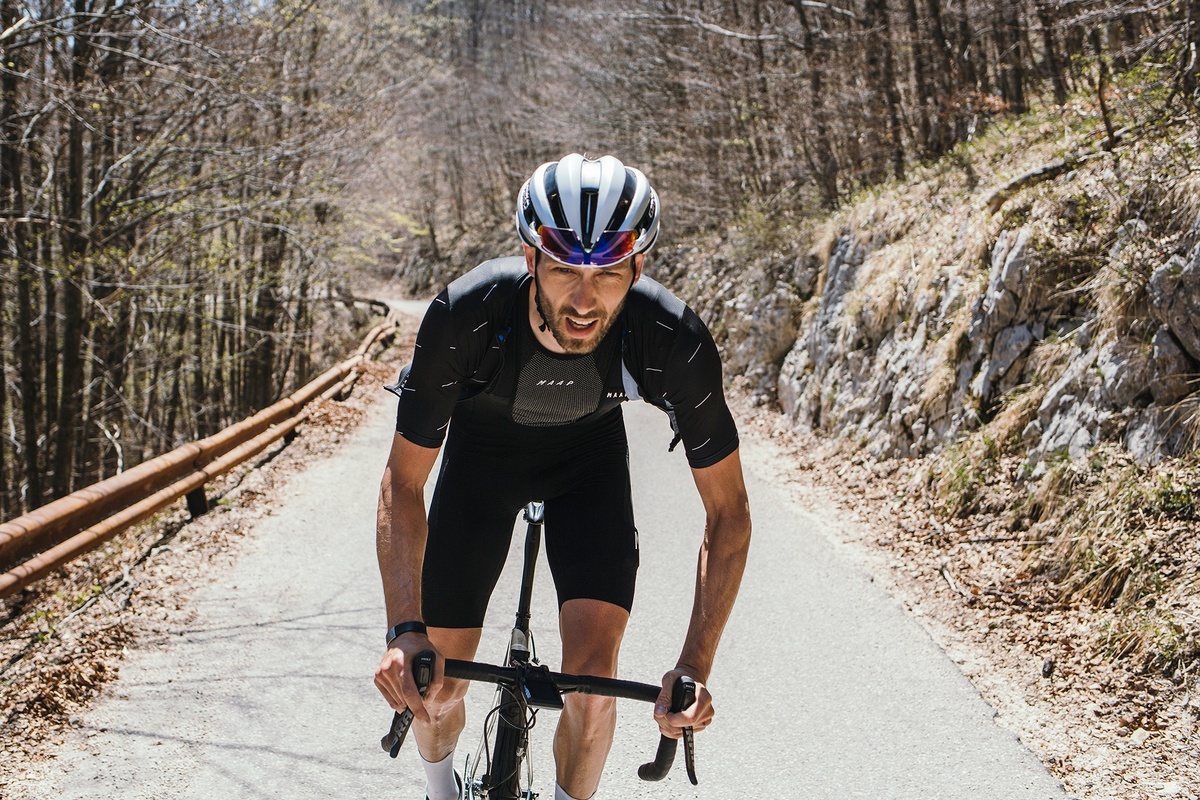When most people hear the term “Cycling Training Camp,” they think of escaping to locations with warm weather, breathtaking scenery, and monumental climbs. Really the goal of any training camp is to get faster and fitter, and while that nice weather, beautiful sights, and long climbs can help, they are by no means necessary. All you need for a successful training camp is a bit of planning and a bit of time.
Here is a breakdown of how you can run your own training camp right from your own home.
Planung
Making a week of it (or at least 4 days) means setting up some consecutive days of free time where you can spend most of your energy on training and put the stress of work /school on the back burner. This ensures you can get back to back days of high-quality training, with equally high-quality recovery.
Plan out your routes for each day, and don’t just limit yourself to routes right form your door. This is a great time to drive 30-60 minutes out to get easier access to routes you usually never do. A new/fresh route can do amazing things for motivation.
You can use apps like Strava or MapMyRide to find popular routes/loops/roads that are typically out of reach.
Map out the workouts you will do. Usually, you should base your routes on the workouts you plan, but this is the time to plan your workouts based on the routes that look fun/exciting.
Instead of exact 20min efforts, base your intervals on the time it takes to finish a climb or loop. This means your interval durations can actually be a bit shorter or a bit longer than you normal. Still, the training adaptations will be nearly identical. Route based intervals also give the benefit of learning pacing/speed over a loop/climb. Pacing is a skill that is incredibly valuable for racing or longer events and group rides, where the efforts aren’t set by round 1-minute intervals, but the time it takes you to complete the climb/loop or follow the attack.
Good training sessions for any training camp
Landmark Sprints
This is a general zone 2 ride that would be the same duration as your average weekend long ride. Every 6-10 minutes, pick a signpost, tree, or landmark that is 100-200m up the road, and sprint full-gas to that point. Again this is not an exact duration focused session, so don’t worry if some sprints are only a few seconds and others drag out to be longer.
Maximal Aerobic Power Hill Repeats
Find a good 1-3 minute long hill (or series of hills if you are on rolling terrain) and hit the gas up it multiple times. Your goal is to average around your 5-minute max power for these 1-3 minute long efforts for those with power. Spin super easy for 2-6 minutes (ideally a 1:2 work to rest ratio) between these efforts. Your goal is to accumulate 12-25 minutes of total time at this power. It’s okay to break it into multiple sets split over the full duration of the ride.
Tempo with Surges
This is a session that can (and should) be done on longer climbs and rolling terrain. The efforts should be 12-20 minutes long, starting with a 15sec controlled sprint, then settling into an effort below threshold (around 85% of FTP) for 2-3 minutes, and then hit another 15sec controlled sprint. Repeat this Surge/Tempo format for 12-20 minutes (or until you finish the loop or get to the top of the climb). Ride Z2 for 10-30 minus before repeating this effort. Hitting a total of 45-60 minutes accumulated time of these efforts is the perfect dose.
The Epic
This is best on your camp’s final day (when you don’t have to leave anything in the tank) where you map out a nice big route and leave everything out on the road! There are no real rules to this one other than making it a route that excites you. This is also a good day to ignore your head unit. Either hide your standard metrics (Power/Heart Rate/Cadence/Speed), go to the map screen view, or just keep your computer in your back pocket. Just enjoy the ride!
Nutrition and Recovery
Once you have your days, routes, and workouts all mapped out, plan out each meal of each day to match your energy demands. High-quality meals are vital to optimizing recovery. These meals can be made in larger batches beforehand and simply reheated when you get back from training. You’ll also want to plan for the nutrition needed during each workout. This is not the week to limit your food intake on the bike. Keep yourself fueled for each day to maximize the fitness gains you’ll make from this camp. Not having to think or prep food on the fly makes a significant impact on your ability to relax and recover.
This leads to an aspect of this camp that is equally (if not more) important to the training itself. Your recovery! The harder you train, the harder you need to recover. Your best recovery tool is high-quality sleep, which means you should spend more time sleeping this week than your “normal” weeks. While scheduling a massage would be a great idea, you can get much of the same benefit from a foam roller and some daily stretching/yoga.
Depending on how long you can make this camp, a good rule of thumb is to take a rest day (recovery spin) every 4 days when stacking these big days into your week. Be prepared to take 2-5 days super easy after your final day of camp to ensure you completely recover from all the hard work you just put in.




